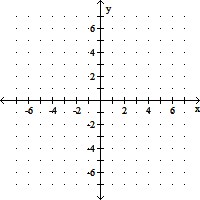Find n(A) for the set.A = {{?}, {0}, {?, 0}}
A. n(A) = 0
B. n(A) = 3
C. n(A) = 4
D. n(A) = 2
Answer: B
You might also like to view...
Graph the function.f(x) = 1.5x - 2
A. 
B. 
C. 
D. 
Solve the compound inequality. Express the solution using interval notation or state that there is no solution.6x - 5 > 19 or -x + 8 ? -7
A. [4, 15) B. (4, 15] C. (4, ?) D. (-?, ?)
Solve the problem, rounding the answer as appropriate. Assume that "pure dominant" describes one who has two dominant genes for a given trait; "pure recessive" describes one who has two recessive genes for a given trait; and "hybrid" describes one who has one of each.In a population, 50% of the females are pure dominant, 40% are hybrid, and 10% are pure recessive. If a pure recessive male mates with a random female and their first offspring has the dominant trait, what is the probability that the female is hybrid?
A. 0.40 B. 0.44 C. 0.13 D. 0.25
Solve the problem.A hot dog stand sells hot dogs with cheese, relish, chili, tomato, onion, mustard, or ketchup. How many different hot dogs can be concocted using any 3 of the extras?
A. 35 B. 105 C. 210 D. 840